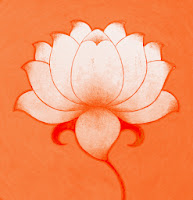Pulastya says---Lord Brahma, the embodiment of Lord Vishnu has a lifespan of one hundred years. His lifespan is also called 'Par', and half of its period is known as 'Parardha'.
 Four yugas are equivalent to twelve thousand years of the deities, which occur in a cyclic order---Satya Yuga, Treta Yuga, Dwapar Yuga and Kali Yuga. The periods of these yugas are as follows---
Four yugas are equivalent to twelve thousand years of the deities, which occur in a cyclic order---Satya Yuga, Treta Yuga, Dwapar Yuga and Kali Yuga. The periods of these yugas are as follows---
One 'Kashtha' consists of 15 Nimesha while a Kala consists of 30 'Kashthas'. A muhurta consists of 30 Kalas. The periods of 30 muhurtas are equal to one day and Night of the human beings. A month of this world is equivalent to 30 days and nights. Six months make an 'Ayan' and a year consists of two 'Ayans'. These two 'Ayans' are also known by two other names---Dakshainayan and Uttarayan. Dakshainayan is the night of the deities where as Uttarayan is their day.
Satya Yuga- 4000 years. Treta Yuga - 3000 years. Dwapar Yuga- 2000 years. Kali Yuga- 1000 years. Total - 10,000 years.
Each yuga is followed by the hibernation periods of Sandhya and Sandhyansh, which are as follows—Sandhya, Sandhyansh
Satya Yuga 400, 400. Treta Yuga 300, 300. Dwapar Yuga 200, 200. Kali Yuga 100, 100. Total 1000 years 1000 years.
Four yuga are collectively known as 'Chaturyuga'. A Brahma's day consists of one-thousand such 'Chaturyugas'. Altogether, fourteen Manu appear during this whole period of 1000 Chaturgas or in other words a day of Lord Brahma. Each 'Manvantar' is named after a Manu and is equivalent to little more than 71 Chaturyugas. It also has its own Indra, Saptarishis and other deities. This way, a manvantar is also equivalent to 8,52,000 years of the deities or divine years. Going by the standard of the years of this world a manvantar is equivalent to 30,67,20,000 years.
On the basis of the years of this world, a Brahma's day is equivalent to 30,67,20,000 x 14 = 4,29,40,80,000 years. This is the period after which a Brahma's day is over and a deluge takes place when all the three worlds becomes devoid of life due to unbearable heat. Lord Brahma then takes rest for the same period (4,29,40,80,000 years) which is his night.
After the night is over, Lord Brahma again commences his creation. So, this process continues for the whole period of Brahma's life span, i.e. 100 years." Bhisma requested Sage Pulastya to describe how Lord Brahma created life in the beginning of the present Kalpa.
Pulastya replied--- At the end of the previous kalpa when Lord Brahma awakened from his sleep, he found the whole earth submerged in water. He meditated on Lord Vishnu, who took the incarnation of Varaha and retrieved the earth and established it in its original position. Lord Brahma then created all the four worlds--Bhurloka, Bhuvarloka, Swargloka and Maharloka and divided the earth into seven islands.
First of all, Lord Brahma created the 'Mahattatva'. After that he created the 'Tanmatras', Indriyas (sense-organs), the immovable things like mountains, rivers, animals, deities, demons, human beings etc.

